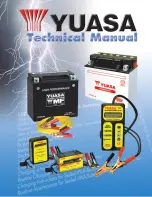
Pro
te
c
t
ed
b
y
co
p
y
rig
h
t.
C
o
p
y
in
g
fo
r
pr
iv
a
t
e
o
r
c
o
m
m
e
r
c
ia
l
p
u
rp
o
s
e
s
,
i
n
p
a
rt
o
r i
n
w
h
o
le
,
is
n
o
t
p
e
r
m
it
t
e
d
u
n
l
e
s
s
a
ut
ho
r
i
s
ed
b
y
V
olk
sw
a
ge
n AG
.
V
olk
s
w
a
g
en
AG do
es
n
ot g
uar
ante
e
or a
c
c
ep
t
a
ny
li
a
b
i
li
t
y
w
ith
r
e
s
p
e
c
t
t
o
th
e
c
o
rr
e
c
t
n
e
s
s
o
f
in
fo
r
m
a
tio
n
in
th
is
d
o
c
um
en
t.
C
o
py
rig
ht b
y
V
olk
sw
a
ge
n
A
G.
WARNING
Faults found must always be rectified (repair measure).
4.16
Changing brake fluid
Instructions for use and safety
4.16.1
Instructions for use and safety
Note
♦
From model year 2006 a new brake fluid will be introduced.
♦
The new brake fluid can also be used for older vehicles.
♦
For this purpose it can be mixed with the previous brake fluid.
WARNING
♦ Brake fluid must under no circumstances come into con‐
tact with fluids containing mineral oils (oil, petrol, cleaning
solutions). Mineral oils will damage seals and sleeves of
brake system.
♦ Brake fluid is poisonous. In addition, due to its corrosive
nature, it must not come into contact with paint.
♦ Brake fluid is hygroscopic, i.e. it attracts moisture from the
surrounding air and therefore must always be stored in air-
tight containers.
♦ Wash away spilt brake fluid using plenty of water.
♦ Do not reuse extracted (used) brake fluid.
♦ Observe disposal regulations!
4.16.2
Brake fluid specification
Permissible brake fluid specifications
♦ Brake fluid conforming to US standard FMVSS 116 DOT 4
(previous brake fluid)
♦ Brake fluid conforming to VW standard, VW 501 14 (new brake
fluid).
4.16.3
Procedure, changing brake fluid
Special tools and workshop equipment required
Touareg 2003 ➤
Maintenance - Edition 11.2011
4. Descriptions of work
63
















































